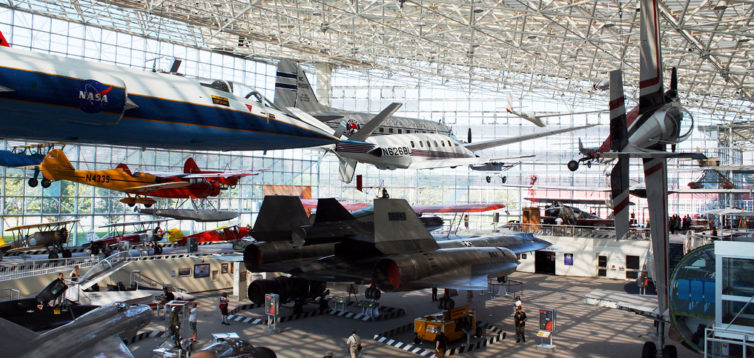
Come to look at the planes, stay to have a good time at the Museum of Flight! Photo: Sean O’Neill | FlickrCC
UPDATE: All of our tickets to the event have been assigned. See below to be added to the waitlist.
If you live in the Seattle area, you like airplanes, and you enjoy getting together with other like-minded people, please keep on reading. On July 30th, our friends at The Points Guy will be at the Museum of Flight to host a special aviation-themed event and you should join!
What will happen at the event? Fun games, aviation-related presentations, travel discussions, a little Q&A, and the best part is talking to other AvGeeks! (there will also be some food and drinks).
You will need a ticket, but we might be able to help with that. We were kindly given a few free tickets to give away to our readers.
The details & how to get your ticket:
What: Exclusive TPG Aviation Event
When: July 30th from 7pm to 9pm
Where: Museum of Flight in Seattle
Cost: Nothing, just a smile
Why: Because
How to get on the waiting list (updated): We have given out all our tickets for the event. If you wanted to be added to the waitlist, you can email me at da***@*************er.com with ’œTPG’ in the subject line. I will know by Sunday if any come available. Thanks!
Hope to see you there (I will be there, along with a few other AirlineReporter writers)!
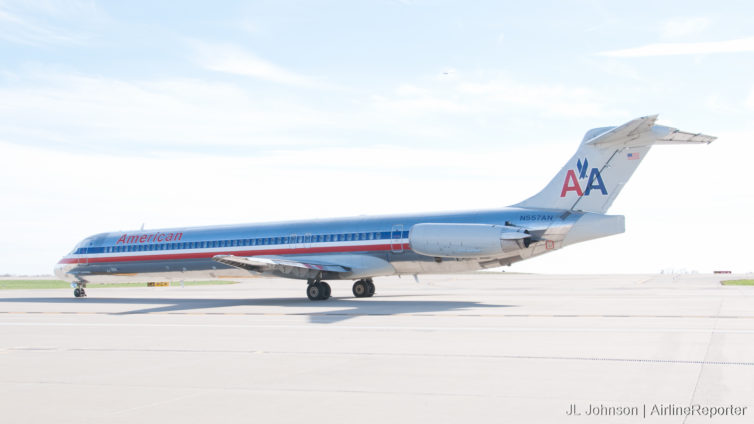
N557AN, an MD-82 spotted on the ramp at MCI in 2013.
Love them or hate them, American’s MD-80s are on the way out. This should not come as a shock as we’ve known for years the day was eventually coming. But late last month American Airlines announced details for the MadDog’s final day of operations. Mark your calendars, folks. September 4 is the day the “Super 80s” carry passengers off into the sunset one last time.
When I mention the upcoming retirement to friends, the majority of responses are positive. It seems the general consensus is that these DC-9 descendants have overstayed their welcome in the AvGeek and frequent flyer worlds. While few folks seem willing to admit they will miss the MD-80s, I fully expect it will only be a matter of time. For decades the MadDogs were ubiquitous. Airports just won’t be the same without them.
No matter how we feel, these retirement dates tend to sneak up on us. The official final flight on September 4 is sold out, but there remain many options to get out for a goodbye flight, including many options on the final day of operation…
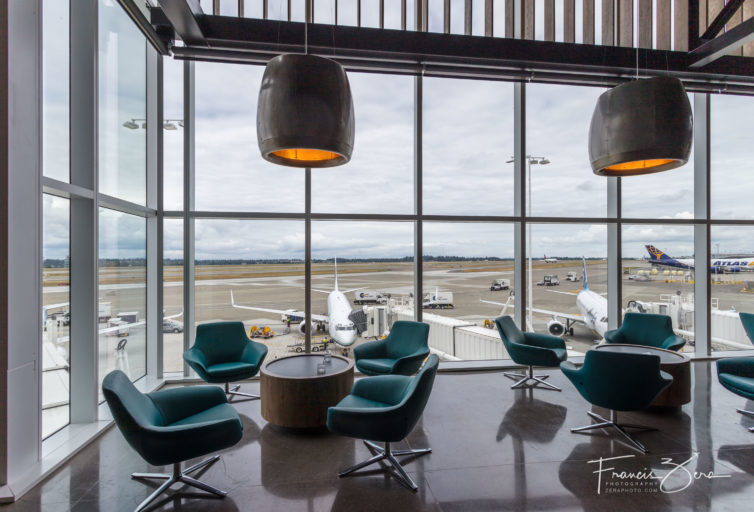
Alaska’s new flagship lounge is huge, comfortable, and offers great views of the runways at SEA
Alaska Airlines has upped their game by opening a huge new flagship lounge at Seattle-Tacoma International Airport on July 12. We got to tour the new lounge during a media preview the day before it officially opened.
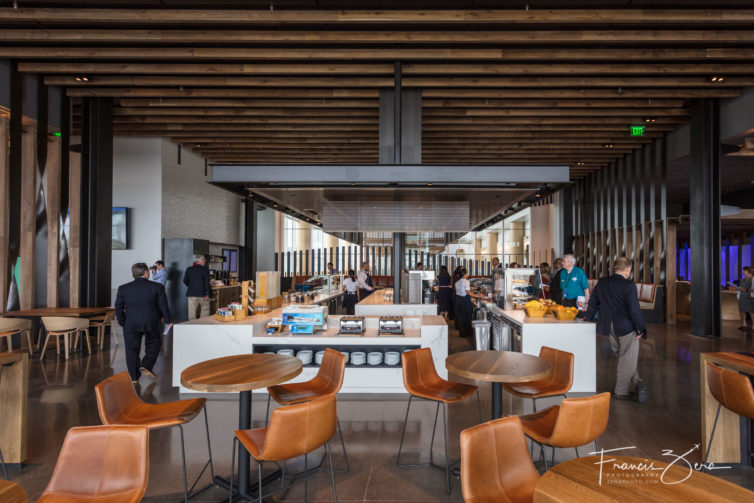
Plenty of room to sip that coffee
The new lounge is part of a $658.3 million update that the airport is currently building at the North Satellite facility; with the completion of this phase, the work is approximately 1/3 complete, according to Sea-Tac Airport Managing Director Lance Lyttle. Construction got underway back in February, 2017.
The project adds eight gates, 255,000 square feet of space, and several new restaurants and shops to the airport.

A JetSuiteX ERJ135 getting a water cannon salute at Boeing Field – Mount Rainier provided a dramatic backdrop
Simple, fast, efficient, comfortable, and reasonably-priced air travel. What’s not to like?
JetSuiteX kicked off scheduled service between Seattle and Oakland, Calif., on July 1, with three flights per day between the two cities.
This means that the metro Seattle area now has three airports offering scheduled passenger service: Seattle-Tacoma International Airport (SEA); Paine Field (PAE) in Everett; and Boeing Field (officially King County International Airport, BFI).
The airline euphemistically referred to the route as the “nerd bird” in a press release, no doubt calling out their hoped-for clientele: business travelers between the two tech hubs.
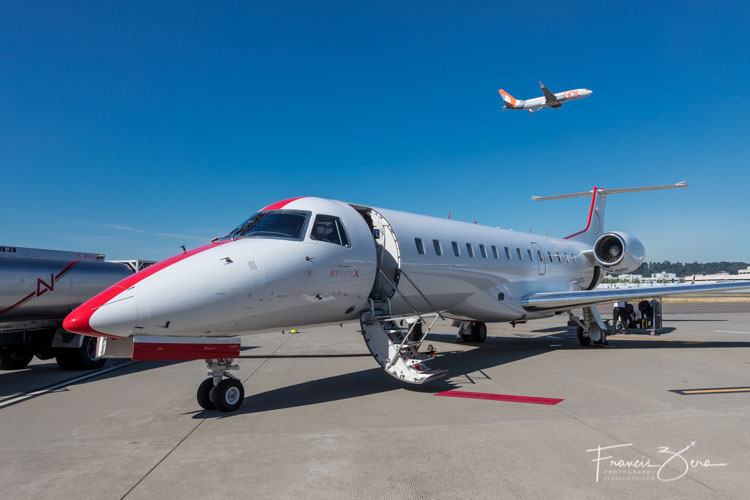
No fuss here – you just walk out of the terminal building and onto your plane (for the curious, that’s a GOL B-737 MAX 8 on a test flight in the background)
We’ll soon have a separate story offering background on the airline and more on their plans for routes, so I’m going to focus primarily on the flying experience here. And what an experience it was.
Arguably, one of the best parts of flying with JetSuiteX isn’t the flight itself so much as the removal of pre- and post-flight hassles. Lines? Not really. There are only a maximum of 30 people on your flight, and you’re either flying out of a relatively quiet secondary airport or an executive-style FBO (fixed base operator) at a major airport.

Long Exposure of STL Airport from across the highway the evening before STLavDay
Airports across the U.S. are recognizing the value in opening up and partnering with local aviation enthusiasts (AvGeeks.) We have been delighted to recognize, encourage, and report on this trend. To that end, AirlineReporter recently featured two airports looking to forge relationships in their own unique ways. How can we tell that this is indeed a trend rather than a few random events? Now, even airports known for being aggressive are looking to thaw relations. While this should not come as a surprise to locals or anyone who has recently tried PlaneSpotting in the area, it’s worth stating: The St. Louis airport has a well deserved, longstanding spot in the “AvGeek unfriendly” category.
But the airport’s recent #STLavDay event suggests that may very well be changing.






